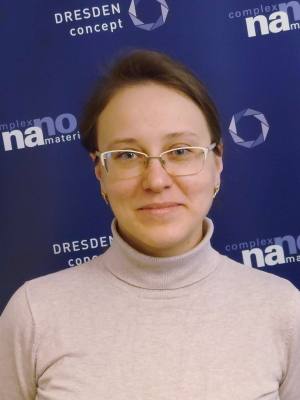


Our group explores the sensory properties of graphene and nanotubes functionalized with mucin-based smell receptors specifically designed to detect human odorant molecules. This involves a molecular dynamics simulation using the NAMD software to analyze interactions between pools of receptors and odorants in the gaseous phase. The adsorption energy of odorants on functionalized graphene is assessed using The Adaptive Biasing Force (ABF) Method [1], revealing correlations with structural characteristics. Moreover, we ascertain the receptor recovery time through the application of the Arrhenius law, and extract temporal associations from molecular dynamic trajectories. This approach holds the promise of fostering a more profound understanding of the sensory mechanisms, contributing to the development of electronic olfaction for enhanced disease detection.
Nina studied Physics and obtained a PhD theoretical biophysics from the Sevestopol National Technical University (2013). After working at IPF Dresden and the Excellence Cluster PoL, she joined our group strengthening the SMELLODI project team.



Our group explores the sensory properties of graphene and nanotubes functionalized with mucin-based smell receptors specifically designed to detect human odorant molecules. This involves a molecular dynamics simulation using the NAMD software to analyze interactions between pools of receptors and odorants in the gaseous phase. The adsorption energy of odorants on functionalized graphene is assessed using The Adaptive Biasing Force (ABF) Method [1], revealing correlations with structural characteristics. Moreover, we ascertain the receptor recovery time through the application of the Arrhenius law, and extract temporal associations from molecular dynamic trajectories. This approach holds the promise of fostering a more profound understanding of the sensory mechanisms, contributing to the development of electronic olfaction for enhanced disease detection.
Nina studied Physics and obtained a PhD theoretical biophysics from the Sevestopol National Technical University (2013). After working at IPF Dresden and the Excellence Cluster PoL, she joined our group strengthening the SMELLODI project team.